
1) A pantheon of hardware progress
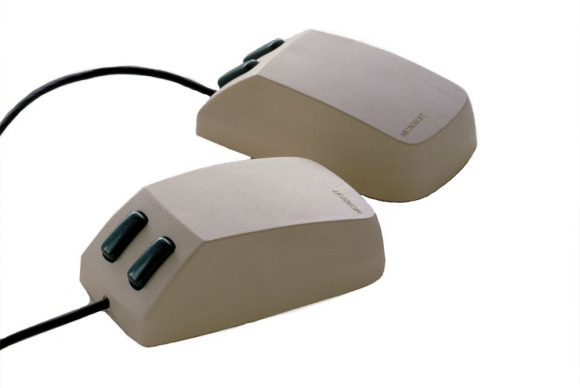 Microsoft built its identity on software development. Just refer to the name, and pay special attention to the "soft." But throughout its storied history, the company has progressively become much more of a multi-discipline workshop, producing physical gear alongside ethereal software code. And now we have the Surface RT tablet, the perfect springboard to recount some of the most memorable (and forgettable) products in Microsoft's hardware history.
Microsoft built its identity on software development. Just refer to the name, and pay special attention to the "soft." But throughout its storied history, the company has progressively become much more of a multi-discipline workshop, producing physical gear alongside ethereal software code. And now we have the Surface RT tablet, the perfect springboard to recount some of the most memorable (and forgettable) products in Microsoft's hardware history.
2) 1983: Microsoft Mouse
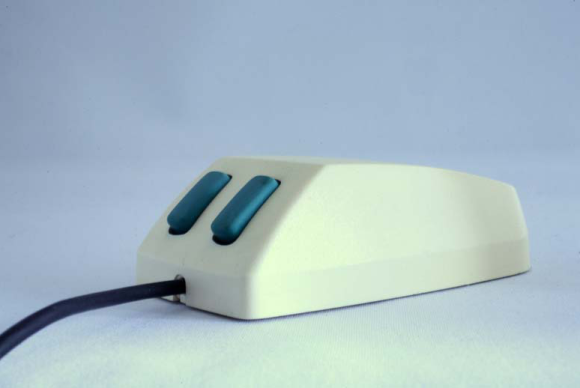 Fondly known as the "The Green-Eyed Monster," the Microsoft Mouse came bundled with Microsoft Word, Notepad and an on-screen tutorial to (get this) teach people how to use it! The proto-mouse came in a bus or serial version, and supported a programmable interface driver for application developers. What started as an easy way to interact with Microsoft Word's GUI in DOS led to something that became as natural as a handshake.
Fondly known as the "The Green-Eyed Monster," the Microsoft Mouse came bundled with Microsoft Word, Notepad and an on-screen tutorial to (get this) teach people how to use it! The proto-mouse came in a bus or serial version, and supported a programmable interface driver for application developers. What started as an easy way to interact with Microsoft Word's GUI in DOS led to something that became as natural as a handshake.
3) 1994: Microsoft Natural Keyboard
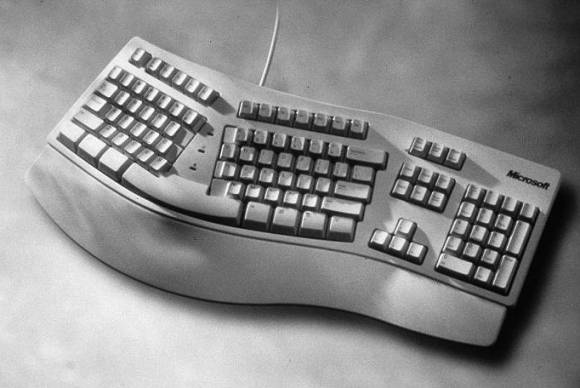 The early 90s were the PC's heyday, but this was also the time when fears of carpal tunnel syndrome and other keyboard-related maladies began to surface. Enter the Microsoft Natural Keyboard, an affordable ergonomic peripheral to combat those wrist-mangling models that came with OEM machines. The position of the keys, split down the center and tilted upward, ostensibly prevented carpel tunnel and helped correct a user's posture. Microsoft's first ergo keyboard became a widespread sensation, and led to upgraded iterations in 1998, 1999 and, most recently, 2005 with the Natural Ergonomic Keyboard 4000, which is still available today.
The early 90s were the PC's heyday, but this was also the time when fears of carpal tunnel syndrome and other keyboard-related maladies began to surface. Enter the Microsoft Natural Keyboard, an affordable ergonomic peripheral to combat those wrist-mangling models that came with OEM machines. The position of the keys, split down the center and tilted upward, ostensibly prevented carpel tunnel and helped correct a user's posture. Microsoft's first ergo keyboard became a widespread sensation, and led to upgraded iterations in 1998, 1999 and, most recently, 2005 with the Natural Ergonomic Keyboard 4000, which is still available today.
4) 1996: IntelliMouse
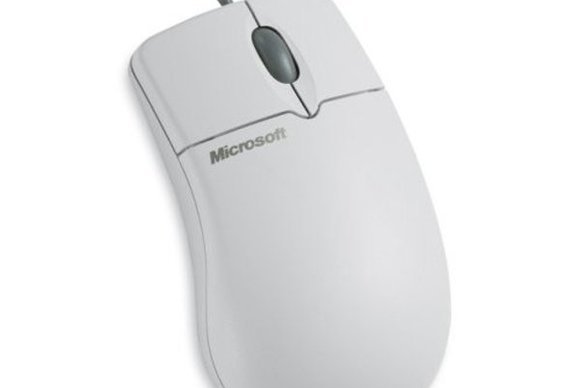 Microsoft released the IntelliMouse at the end of 1996, using it as a platform for a variety of mice showing off truly innovative features. You can thank the IntelliMouse lineage for the scroll wheel, the optical sensor, forward and back buttons, modern ergonomic designs, and the trackball design. The last IntelliMouse Microsoft made was the Explorer 3.0, which was recently discontinued.
Microsoft released the IntelliMouse at the end of 1996, using it as a platform for a variety of mice showing off truly innovative features. You can thank the IntelliMouse lineage for the scroll wheel, the optical sensor, forward and back buttons, modern ergonomic designs, and the trackball design. The last IntelliMouse Microsoft made was the Explorer 3.0, which was recently discontinued.
5) 1996: SideWinder
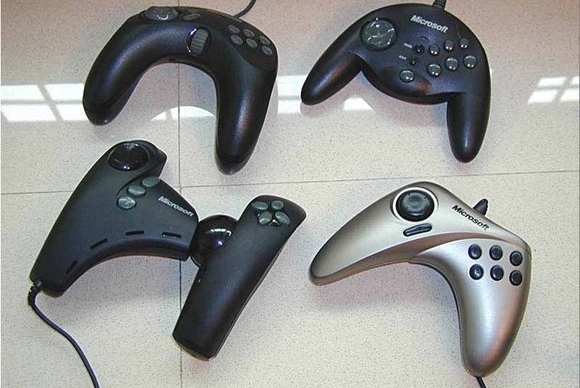 There was a time when gamepads and joysticks ruled PC gaming, and Microsoft was king. The SideWinder brand debuted with a gamepad (pictured top right) that became popular enough to warrant many games to come with SideWinder-specific controls. In the following years, Microsoft developed joysticks (next slide), the motion-based gamepad Freestyle Pro in 1998 (top left), and the two-piece Dual Strike in 2000 (bottom left), a real-time-strategy controller that replaces one's keyboard and a programmable voice communication device.
There was a time when gamepads and joysticks ruled PC gaming, and Microsoft was king. The SideWinder brand debuted with a gamepad (pictured top right) that became popular enough to warrant many games to come with SideWinder-specific controls. In the following years, Microsoft developed joysticks (next slide), the motion-based gamepad Freestyle Pro in 1998 (top left), and the two-piece Dual Strike in 2000 (bottom left), a real-time-strategy controller that replaces one's keyboard and a programmable voice communication device.
Not all SideWinder products were hits, but many pushed the boundaries of what gamers knew PC peripherals could do.
6) 1996: SideWinder Force Feedback Pro
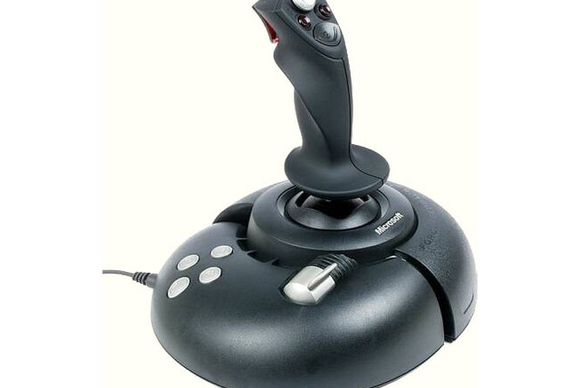 Some products stand out from the rest, and the Force Feedback Pro was one of SideWinder's shining beacons. It was modeled after Microsoft's other joystick, the Precision Pro, but also added motors for palpable force feedback that corresponded with game play. The original stick became popular enough to spawn a second device, the Force Feedback 2, which is still supported today.
Some products stand out from the rest, and the Force Feedback Pro was one of SideWinder's shining beacons. It was modeled after Microsoft's other joystick, the Precision Pro, but also added motors for palpable force feedback that corresponded with game play. The original stick became popular enough to spawn a second device, the Force Feedback 2, which is still supported today.
7) 1998: Microsoft Cordless Phone System
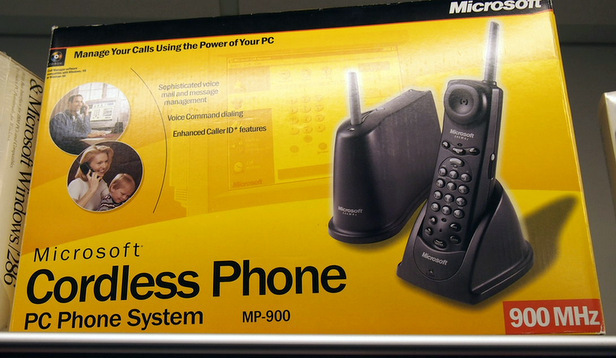 Today we have the wonders of Skype to make calls from our PCs, but back in the 90s, telephony pioneers relied on a cordless phone. Microsoft's MP-900 was the first 900 MHz phone to link up with a PC. It could work independently to make and receive calls, but required a system in order to utilize the Call Manager software.
Today we have the wonders of Skype to make calls from our PCs, but back in the 90s, telephony pioneers relied on a cordless phone. Microsoft's MP-900 was the first 900 MHz phone to link up with a PC. It could work independently to make and receive calls, but required a system in order to utilize the Call Manager software.
The program provided a digital address book, Voice Command dialing, Caller ID, an easy way to manage voice mail, and other various phone-related conveniences. Unfortunately, a year after its release, the product was discontinued and the software was no longer supported after Windows 95/98. The Cordless Phone System proved to be too complicated to set up properly, and was simply too niche and narrow to really catch on.
8) 1998: DSS80 Speakers
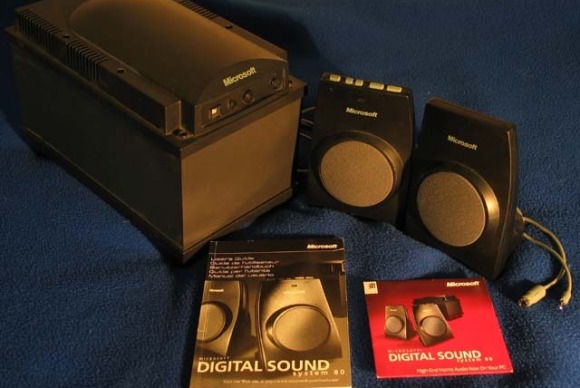 The Digital Sound System 80 stands today as the only speaker system ever released by Microsoft. The three-piece ensemble included two satellite speakers and a subwoofer that had a built-in digital amplifier that eliminated the need for a sound card. The system was also revolutionary for using USB to convert digital sound from one's computer to analog in the subwoofer.
The Digital Sound System 80 stands today as the only speaker system ever released by Microsoft. The three-piece ensemble included two satellite speakers and a subwoofer that had a built-in digital amplifier that eliminated the need for a sound card. The system was also revolutionary for using USB to convert digital sound from one's computer to analog in the subwoofer.
Sadly, the DSS80s also had a volume control problem that would set volume to maximum or minimum instantly, countered only by hitting the mute button. Despite the system's decent quality and innovation, Microsoft didn't expand its speaker selection.
9) 2001: Xbox
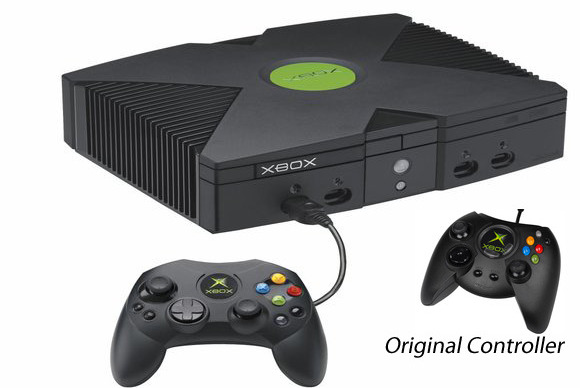 OK, now we're on to something. At a time when Sony, Sega and Nintendo were the titans of the game console industry, Microsoft threw down with the Xbox, a concept that originated with the company's DirectX team. Indeed, the prototype machine was pitched as the "DirectX Box."
OK, now we're on to something. At a time when Sony, Sega and Nintendo were the titans of the game console industry, Microsoft threw down with the Xbox, a concept that originated with the company's DirectX team. Indeed, the prototype machine was pitched as the "DirectX Box."
It was the first console to feature an internal hard drive for game saves and extra content, eliminating the need for external memory cards. Microsoft also acquired Bungie to create Halo: Combat Evolved as the must-have launch title. Its sequel, Halo 2, was the best-selling game on the console with nearly 8.5 million copies sold. The original controller was universally criticized, described as being too bulky and heavy for any resemblance of comfort. But the smaller "Controller S" became standard in 2002, and lasted through 2007.
10) 2004: Microsoft Fingerprint Reader
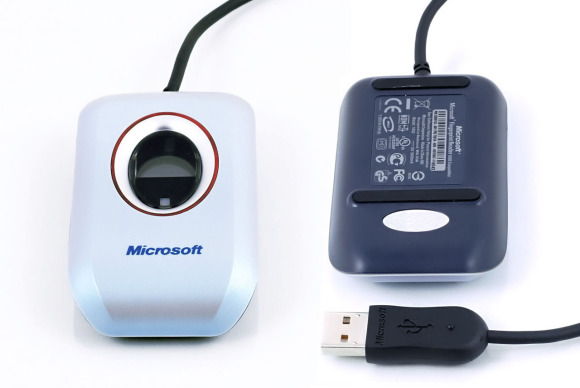 Using different passwords can be a pain to remember and using the same one for all your accounts is a risky practice. So in 2004, Microsoft introduced a fingerprint scanner to help alleviate password headaches... but probably ended up inducing more trouble of a different kind.
Using different passwords can be a pain to remember and using the same one for all your accounts is a risky practice. So in 2004, Microsoft introduced a fingerprint scanner to help alleviate password headaches... but probably ended up inducing more trouble of a different kind.
The device could store up to 10 fingerprints per user, each of which would be registered with a username and password and stored on your system. It was marketed as a tool of convenience and not security because the system didn't encrypt the saved fingerprint data. Indeed, anyone with the right tools could gain access to the fingerprint files, and thus all the information belonging to the owner of each digit. After that exploit was discovered, support for the device ended, and there was never a 64-bit driver for XP or Vista.
11) 2005: Xbox 360
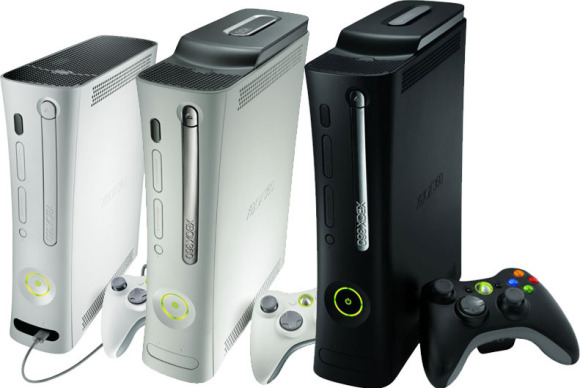 Thanks to the success of the original console, Microsoft started conceptualizing a second Xbox in 2003. The first generations of Xbox 360 had a reputation for hardware failure, bringing notoriety to the "Red Ring of Death." These system failures were mostly attributed to a heating issue, which Microsoft took responsibility for and extended the warranty of the machines, eventually replacing each one that died.
Thanks to the success of the original console, Microsoft started conceptualizing a second Xbox in 2003. The first generations of Xbox 360 had a reputation for hardware failure, bringing notoriety to the "Red Ring of Death." These system failures were mostly attributed to a heating issue, which Microsoft took responsibility for and extended the warranty of the machines, eventually replacing each one that died.
Unlike the original Xbox, 360 employed detachable hard drives secured to the top, allowing for more customized storage options, and the ability to upgrade at a later time. The Xbox 360 is now strongly marketed as a set-top box, capable of delivering an entire entertainment center in a single device. With the latest updates and Xbox Live, users can stream music and movies via a number of popular apps (such as Netflix and Last.fm), download games and game content via the Xbox Marketplace, and enjoy various social features.
12) 2006: LifeCam
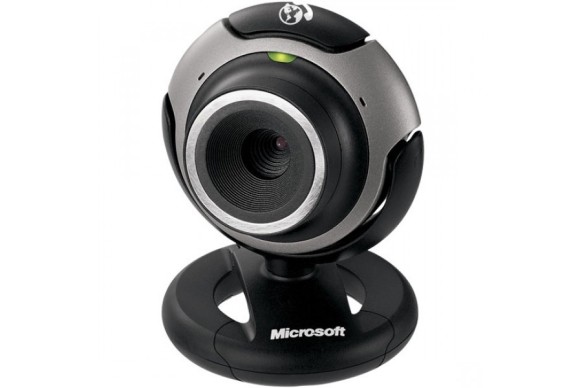 Video-chatting gained a lot of steam in 2006, and Microsoft wanted to streamline the process by introducing the LifeCam brand of webcams. All were optimized for Windows Live Messenger, and boasted decent video quality and integrated microphones. They also came with a simple button that would bring up a tool to show who was online, and allow you to connect instantly.
Video-chatting gained a lot of steam in 2006, and Microsoft wanted to streamline the process by introducing the LifeCam brand of webcams. All were optimized for Windows Live Messenger, and boasted decent video quality and integrated microphones. They also came with a simple button that would bring up a tool to show who was online, and allow you to connect instantly.
The first two models were the VX-6000, which took 5.0 megapixel stills and 1.3 megapixel video, and the VX-3000 (pictured), which took 1.3 megapixel stills and 640-by-480 pixel video. Today there are still a ton of LifeCam products ranging in quality and price to fit any webcam need.
13) 2006: Zune
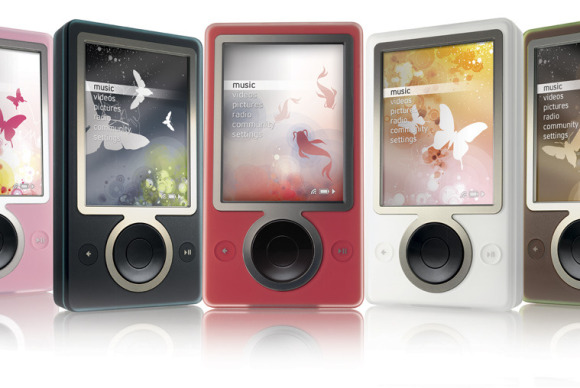 This is where things got really, really bad.
This is where things got really, really bad.
Zune is Microsoft's digital media store, the answer to Apple's iTunes. But with the launch of the service in 2006, Microsoft also launched a 30GB portable media player, also known as Zune, to compete with Apple's iPod. And almost immediately, the Zune player became a meme encapsulating hardware failure.
Undeterred, Microsoft followed the original Zune with two generations of hardware and three generations of software, offering games, song tagging, varying capacities, social features, on-device purchases and eventually an OLED touch screen with the release of the Zune HD in 2009.
Despite the innovative social aspects of the media player, it failed to compete with Apple's iPod and all Zune hardware was discontinued on October 3, 2011. Zune still lives on as a service but plans to discontinueit in favor of Xbox Music are in the works.
14) 2007: Microsoft Surface 1.0
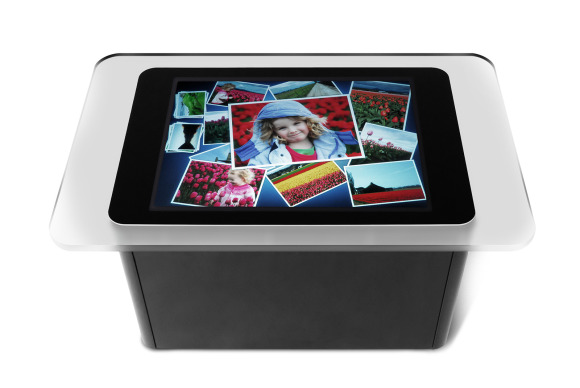 The original Microsoft Surface was designed with commercial applications in mind, which is why you will mostly find these touchscreen tables in large hotel chain lobbies or Disneyland's Innovations Dream House at Tomorrowland. The Surface has a 30-inch display and can recognize 52 simultaneous multi-touch points of contact. It can distinguish between different objects such as fingers or dice, and can react accordingly.
The original Microsoft Surface was designed with commercial applications in mind, which is why you will mostly find these touchscreen tables in large hotel chain lobbies or Disneyland's Innovations Dream House at Tomorrowland. The Surface has a 30-inch display and can recognize 52 simultaneous multi-touch points of contact. It can distinguish between different objects such as fingers or dice, and can react accordingly.
The included software has a photo browser, video browser and Microsoft's pinball game. The Surface 1.0 was discontinued in 2011 when Samsung's SUR40 with Microsoft Surface 2.0 software was announced. The Surface software was later renamed to PixelSense when two new Microsoft tablets dubbed Surface were announced in June 2012. Perhaps you've heard of them?
15) 2010: Kinect
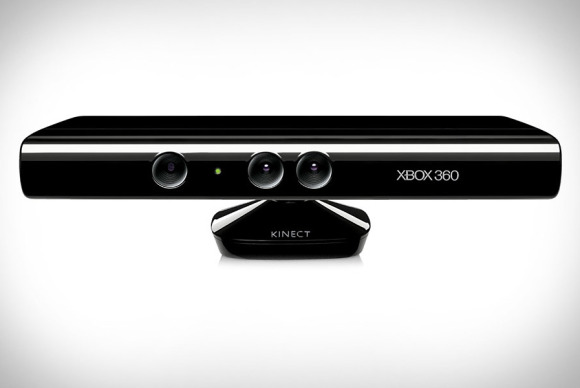 If the Kinect had been designed by Apple, it's safe to say the mainstream press would have dubbed it revolutionary. But, no, it's made by Microsoft, and simply goes down in history as the marvel that everyone loves, but doesn't get due respect.
If the Kinect had been designed by Apple, it's safe to say the mainstream press would have dubbed it revolutionary. But, no, it's made by Microsoft, and simply goes down in history as the marvel that everyone loves, but doesn't get due respect.
In case you haven't played with one, it's a webcam-esque add-on for the Xbox 360 that allows you to control games and other media via motion and voice commands. It was released on November 4, 2010 and became the "fastest selling consumer electronics device" according to Guinness World Records.

 Previous page
Previous page Back to top
Back to top







